THE WORLD'S FAIRS: Impossible History? The most magnificent buildings you have ever seen... were built in a month? PART 1
700 square miles covered with marvelous buildings... completely disappeared...
Welcome to the start of an incredible multi-part series on the World’s Fairs - one of the most fascinating topics that few have heard of because these glorious events, thrown all around the world, are excluded from worldwide school curriculum. There were (at least) hundreds of these fairs, spanning over a century, yet not a peep about them during the entirety of our 10+ years of a class that is supposed to teach us about those who came before us. By the end of this series, you may discover that a World’s Fair took place, quite literally, in your own back yard… then quickly vanished without a trace left behind…
We have to remember the history we are taught: when the brave settlers arrived in America, there was nothing until those good men built it all for us. We are told these heroes had no electricity therefore no real tools, no vehicles, planes or railroads, all they had was horses and wagons, shovels, pickaxes and elbow grease...
Because one of this existed:
Yet they built buildings like this…
And this:
Using this:
But it wasn’t just jaw-dropping hospitals, schools, insane asylums and government buildings, they also created the World’s Fairs (also referred to as Expositions):
The stated purpose of these Fairs was nothing more than to “showcase the achievements of nations”.
Although the buildings themselves are remarkable, what’s even more amazing is how quickly history claims they were constructed. For example…
…the Chicago World’s Fair, also known as the “Columbian Exposition”, occurred in 1893. The event grounds spanned 700 square miles…
… and it was all built in only two years...
The Manufacturers and Liberal Arts Building at this Expo held 300,000 people and featured 10,000 electric lights just on the outside of it. These are all photos of the Manufacturers Building:
The state of California showed off their produce in The California Building. It alone measured 100,000 sqft and showcased “pears the size of turnups“:
Quite a feat to pull off in 24 months! The explanation history provides is that all of these buildings were just temporary displays, thrown together for show - more on this later in this series, but first:
The Louisville, Kentucky Exposition (World’s Fair) of 1884 was scheduled to run for only two total months. It spanned 45 acres with the main building covering 13 of them:
The building featured 5,000 lightbulbs and 5,000 lamps, 400 of which were used in the art gallery… in 1884… only two years after the very first installation of a power grid in America…
How long did construction take? “Several months to a year” - this included clearing and preparation of the site.
The Trans-Mississippi Exposition of 1893 covered 180 acres, “The entire fairground was roughly equivalent to 270 standard American football fields.”
They even dug the lakes, streams and channels just for the Fair (not kidding):
Wanna guess how long this one took to build?
From start to finish, construction was complete in 12-14 months.
The Centennial Exposition was held in Nashville, Tennessee in 1897 and spanned 117 acres.
It took two years to complete.
In 1884, an expo held in New Orleans, Louisiana called the World Cotton Centennial.
The site began being prepped for construction in 1882… the fair opened in 1884.
This got me wondering, how many people lived in these cities at the time? To create something of this magnitude so quickly, a large quantity of men must have been working on it… right?
Yet when you look up New Orleans economy records for the same years as the construction of the fair, they say the main employment industries were “Port and Shipping”, “Service Sector” (hotels, restaurants), “Manufacturing” (sugar refining, tobacco processing) and “Plantation”. Nowhere on that list is architecture or building. I guess they imported mass quantities of builders?
California hosted three World’s Fairs. The first was the California Midwinter International Exposition of 1894. It covered 200 acres.
Construction took under one year.
The second Cali event was the 636-acre Panama-Pacific International Exposition of 1915:
This one was lightning-fast to build…
…only 6-9 months…
If we do the math, a six-month build time means they would have had to build over 100 acres per month… over three acres PER DAY… and that excludes the time required to clear the land prior to beginning construction…
The third Fair in California was the Golden Gate International Exposition (1939-1940). It spanned 400 acres.
”The construction of Treasure Island began in 1936, and it was completed in 1937.”
There are hundreds of additional Fairs and Expositions that we know of. Point being, the speed at which they used to build was quite astonishing, eh? Many years ago, when my children were young, the spouse and I looked at new construction homes because our current house felt so small. We discovered the building process takes around a year… for a 2,300 sqft house… now imagine 400 acres of buildings 10x the size…
This leads many of us to question if what history is claiming is remotely possible. If it is not possible to build 600 acres of this in six months…
… then it means the structures were already existing. Meaning, they found a mini-city and threw an event within it, claiming to have built it when no such thing ever occurred - and this is what we will diving deep into in this series. But before we move on, just to be completely clear, the fair organizers did indeed build some buildings, but you can easily tell which ones they are. For instance, this is one of the buildings they made. It came toppling down:
You can tell it’s one of the cheap buildings because the quality is inferior. You can see the balcony seams:
The side looks very amateur:
The top has tacky pylon-type decor and they don’t even match:
There are flaws in the design:
You can tell that whomever made that building didn’t really care; there was no pride in their work, which is polar-opposite of other World’s Fair “temporary buildings” like this:
Closeup:
Again, the detail is breathtaking:
Even the railing in the background is so ornate:
Let me show you an even more eyebrow-raising example: Paris threw a World’s Fair (Expo):
Featuring extravagant detail, both inside and out:
Here’s Belgium’s exhibit inside of the Paris Expo. Note what appears to be hand-carved marble pillars and marble walls. If you’re on a cell phone, please zoom in, you will be amazed:
Building took only a couple years but strangely, the majority of the work time went into the Eiffel Tower, which was one of the structures they did indeed create:
Why do I say it’s strange that so much time went into the Eiffel? Well, look at it (photo from the Expo):
It look them two years just to build that thing. If it took that long to piece together a bunch of steel beams, then how did they make 500-acres of this in the same amount of time, or less?:
To make the whole thing even more perplexing…
THE ODDITIES CONTINUE
Interestingly, one of the New York World’s Fairs took place during WWII. This is of great importance because, at this time in the USA, literally everything was being rationed and the public was being told there were no builders and no lumber therefore no housing: (1 minute video)
So while the public cannot get a home due to no lumber, let alone buy a pot roast or a new pair of shoes, this was being built, from scratch… in six-months to two-years?
And “temporary” bridges were constructed using brick and stone?:
Another one of the largest World Fairs ran during WWI and a third was during the worst economic crisis in American history, the Panic of 1893.
The 1906 World’s Fair immediately followed the California earthquake-fires we discussed in my article Fires to Erase History?. It sure seems like they pick bad times to quickly build these fairs, doesn’t it?
Now you may be thinking, “Agent, surely the fairs generated much-needed money for these cities! This must be why they threw them during such dire times!” - I considered the same; what if these Fairs were essentially fundraisers for the cities and states suffering extreme financial impact due to chaos? That would explain why they kept having them at times when it seems completely inappropriate to host a large-scale event, but upon researching, I discovered the exact opposite is true. In fact…
not only did almost all of these fairs turn out to be a net loss, but they were gigantic losses, amounting to millions of dollars…
…which was a hell of a lot of dough back in the 1800s and early 1900s. This leads to the next question, “Who paid for these things?”….
Although some funding came from the exact same elites you would expect to be funding these things, the majority of the expense was carried by US! And by “US” I don’t mean the United States, I mean literally us, the taxpayers! Let me give you some examples of how much of a loss these fairs were:
The St. Louis Fair of 1904 made a loss of $8.5 million (equivalent to over $250 million today)
The Philadelphia Exposition of 1906 was so bad that it ended in bankruptcy.
The Berlin World’s Fair left their economy with a debt of $2,000,000 Reichsmarks.
The German-Nordic Trade and Industry Exhibition also ended with the citizens shouldering the debt the event caused.
Wrap your mind around this: city after city, state after state, country after country, threw a fair in an area spanning hundreds-upon-hundreds of square miles, on which they built all of these majestic structures from the ground up, at the taxpayers expense, knowing nearly all of the prior fairs resulted in massive financial losses. I think we can all agree that this makes absolutely no sense, so what was actually going on? It turns out, a whole hell of a lot because this story is just beginning. NEXT READ: Demolishing the Worlds Fairs: The Most Fascinating Story You've Never Heard, but first:
NEXT READ
SOURCES NOTES & OTHER STUFF
Panic of 1893 https://en.wikipedia.org/wiki/Panic_of_1893
https://dn720006.ca.archive.org/0/items/sheppsworldsfair0000jame/sheppsworldsfair0000jame.pdf
https://www.cardcow.com/viewall/66498/
https://www.stltoday.com/life-entertainment/local/home-gardening/couple-preserves-a-unique-1904-world-s-fair-home-in-cwe/article_368d2de6-3c2e-11ee-801c-47e35edb1298.html
financing https://www.history.com/news/7-things-you-may-not-know-about-the-1893-chicago-worlds-fair
In the late 1880s, Chicago, St. Louis, New York and Washington, D.C. all submitted bids to host the 1893 fair, but the race was soon narrowed to New York and Chicago. Big Apple financial titans including Cornelius Vanderbilt, William Waldorf Astor and J. P. Morgan pledged to raise $15 million to cover the city’s expenses, with Chicago’s mercantile and meatpacking millionaires Marshall Field, Philip Armour and Gustavus Swift following suit. But when Lyman Gage, president of one of the largest banks in the Midwest, arranged for millions more in financing, momentum swung Chicago’s way and the U.S. Congress, which was in charge of the selection, awarded the city the exposition.
https://archive.org/details/officialguidetog01worl/page/n3/mode/2up
https://archive.org/details/finalfinancialre00panarich/finalfinancialre00panarich/page/n5/mode/2up
https://www.nps.gov/goga/planyourvisit/upload/PPIE_1915_2021.pdf
https://library.brown.edu/cds/paris/worldfairs.html
The New York World’s Fair was held on 1,202 acres of land and featured over 100 buildings.
Construction took under three years.












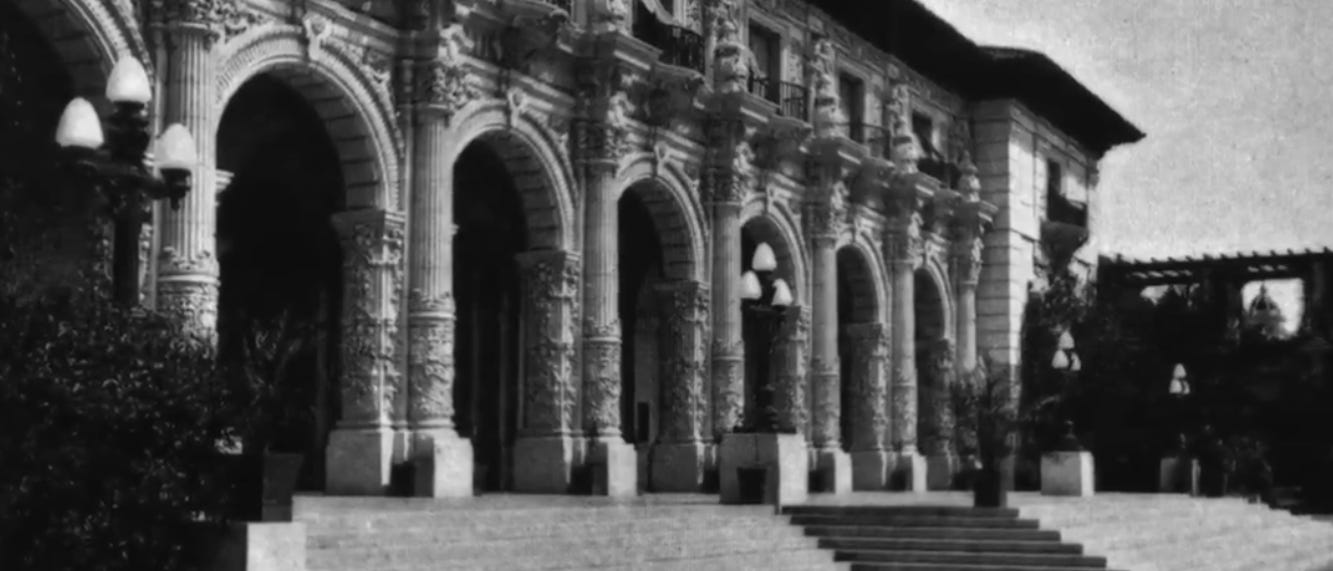

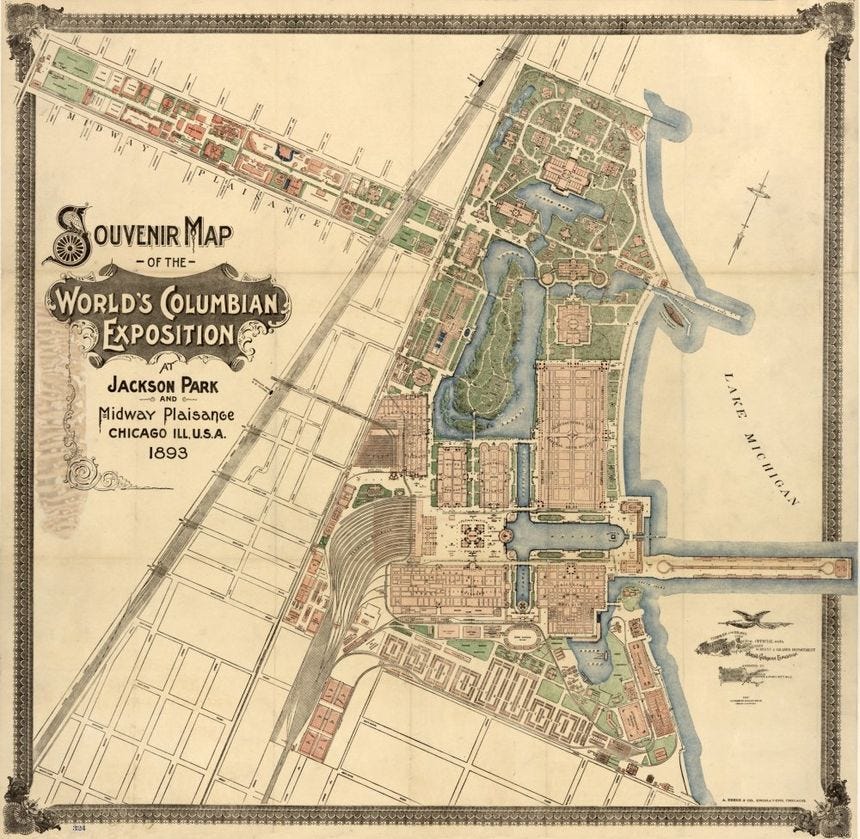

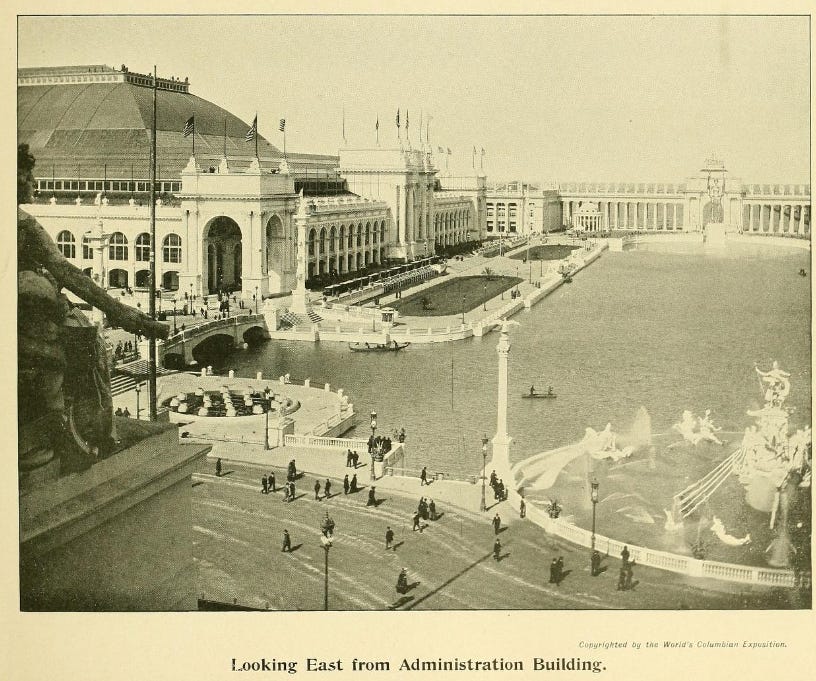







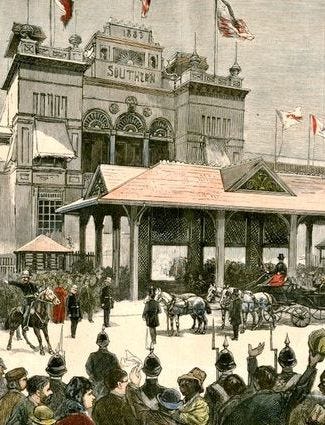

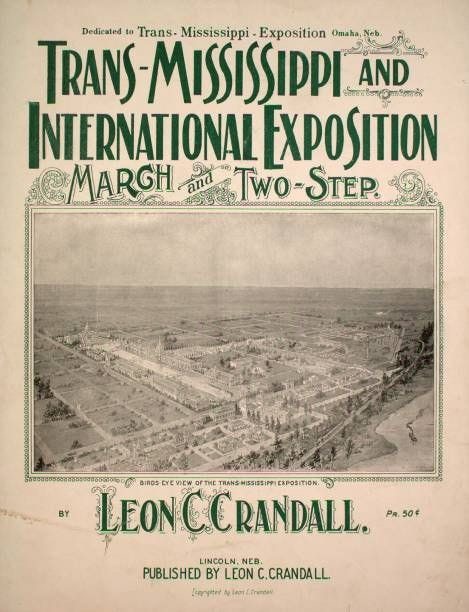






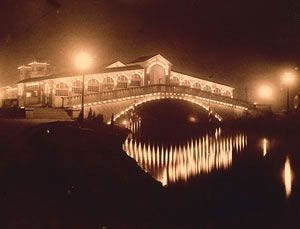




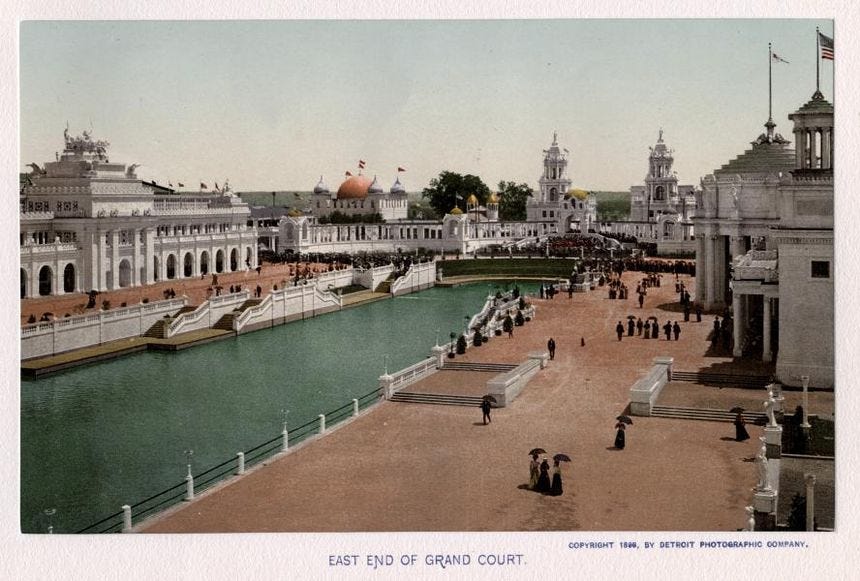


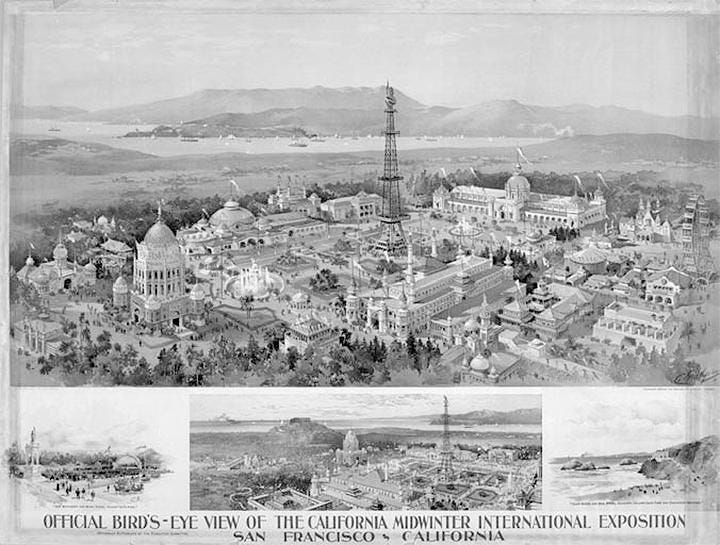








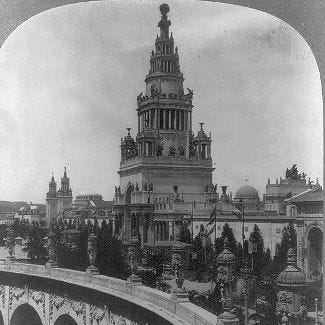








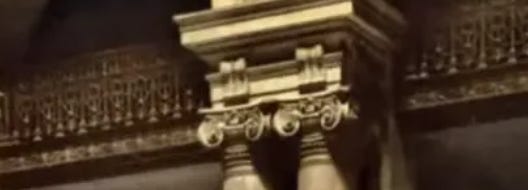






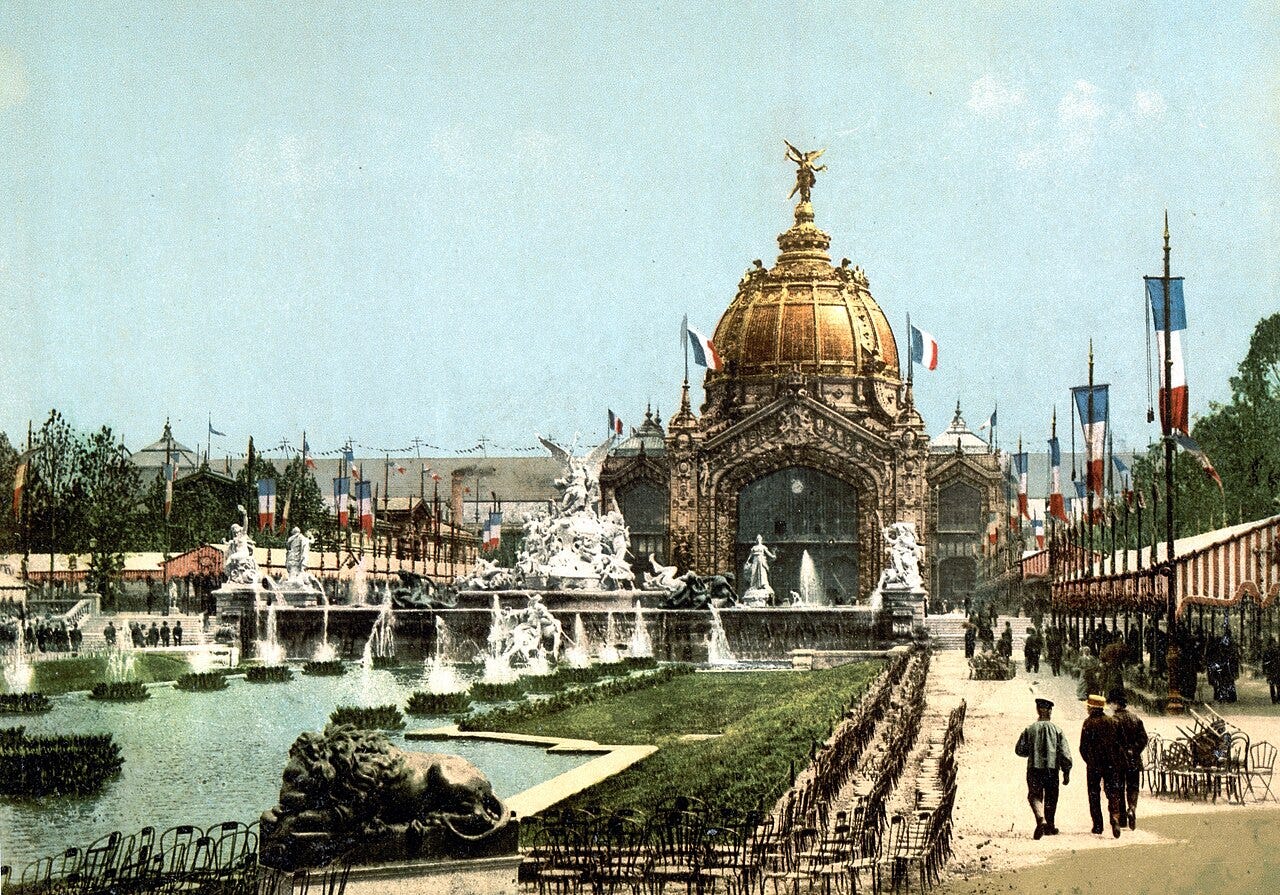











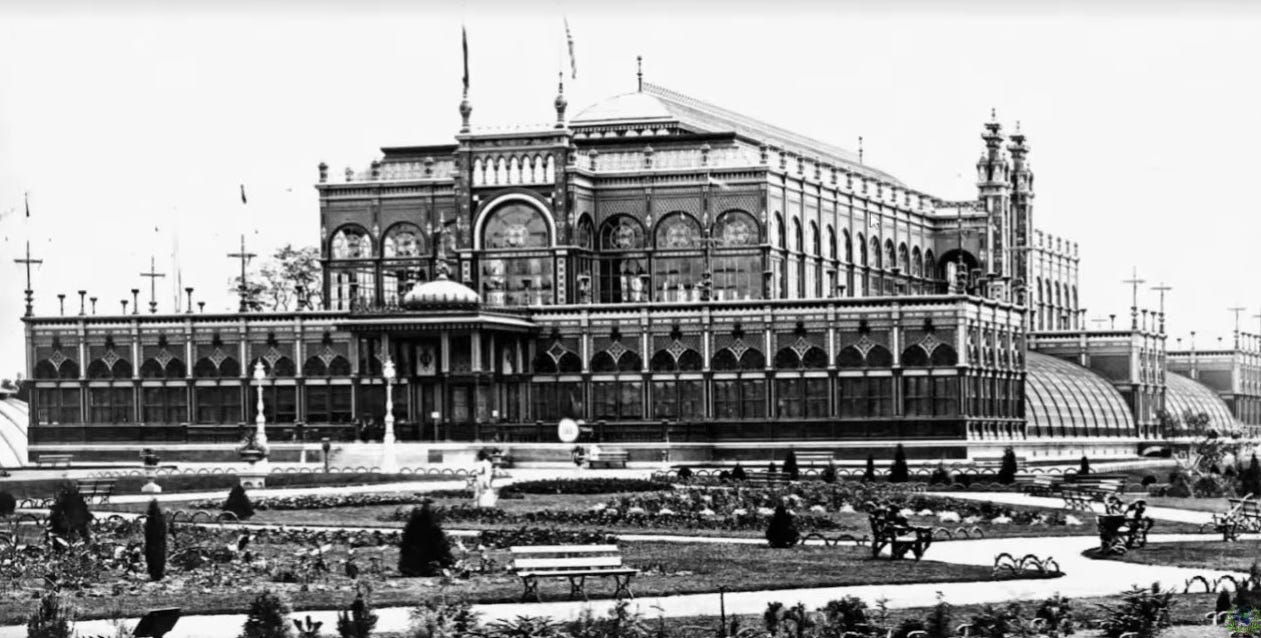
















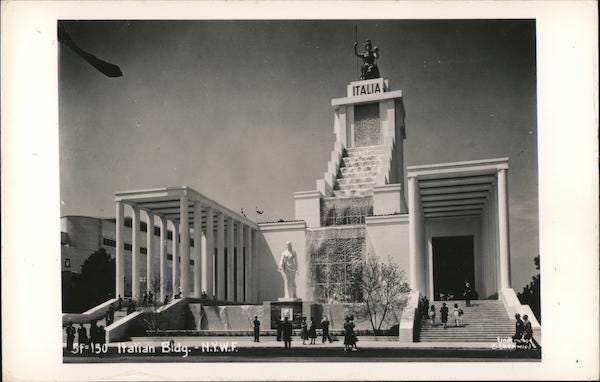

Jon Levi on YouTube runs a very thoughtful channel. He believes there’s good evidence of buildings from before the last Great Reset.
One of the not particularly original thoughts I’ve been musing on recently is the idea that there have been Great Resets before the one we’re in now. There are buildings all over the world for which the official narrative is questionable.
There is a very large number of “star forts” all around the USA, some of which are so large, that at the alleged date of building, they were the largest brick building in the western hemisphere. Stranger still is one, in the Gulf of Mexico, that still is! The official explanation for it sounds like a cover story to me.
When you start looking around the Bay Area, there are artificial islands, like Mare Island and Treasure Island. And huge surf breaks protecting coast-lines that they don't even account for, like the one that runs all the way out to Point Reyes from the Golden Gate bridge. It appears like the lower Napa River is a 15-mile canal that someone built. Straight as an arrow. In Chicago, the Roosevelt Building is supposed to have been built in the 1880s. I went to grad school at Roosevelt, and I always knew the story was a lie. When you walk through the doors into the lobby, you can look up 200 ft to a stained-glass mosaic, directly centered above the lobby. There is a massive ballroom on the 8th floor. The whole thing is built with such heavy stone that there is no way they built it in 1889. The Museum of Science and Industry in Chicago was also supposed to have been built for the World's Fair. It wasn't. It must have 100 30-ft doors, and the expanse of the marble floor is beyond my comprehension. We stand on the shoulders of giants. We don't even know what to do with their buildings.